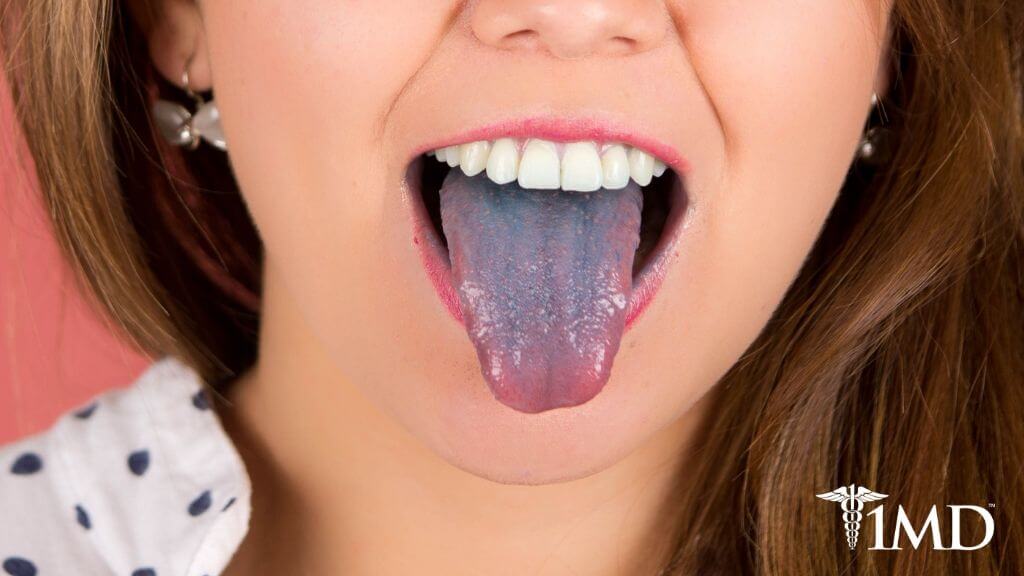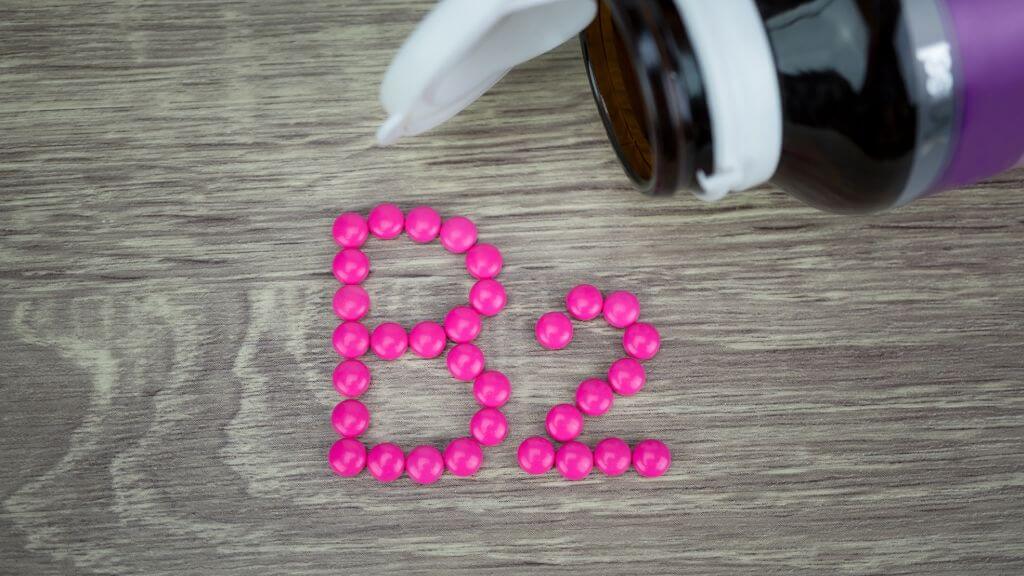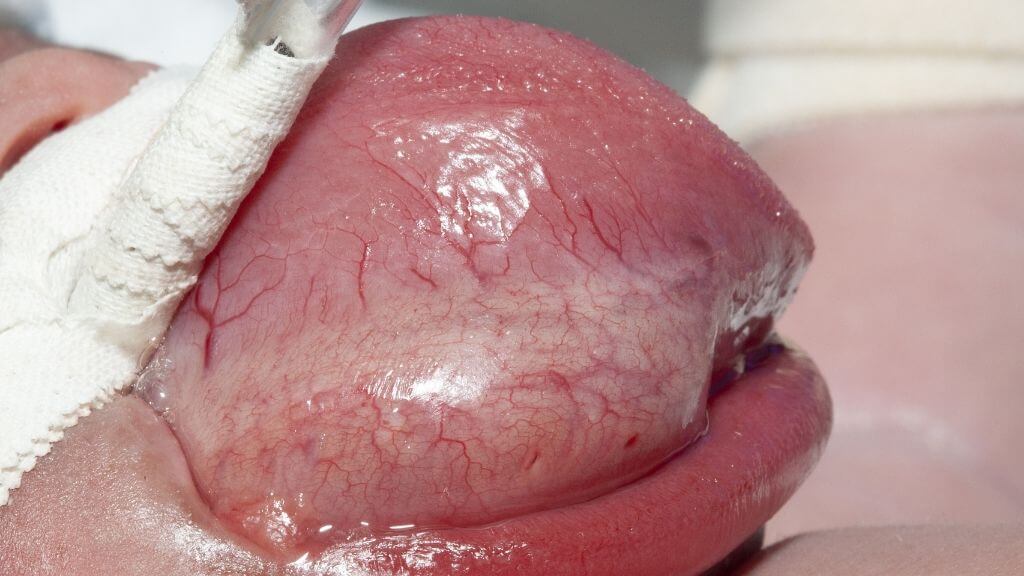From Food to Medical Concerns: 8 Reasons Why Your Tongue Is Purple
8 minute read
Have you ever woken up with a yellow tongue? It’s common and most likely harmless, but identifying the cause is important for many reasons. Find out how to clear it up on your own, and prevent it from coming back in the future, with this quick read.
If you’re seeing what looks like purple or blueish spots on your tongue, you’re probably a little concerned. Is that normal? What does it mean?
Your tongue is a muscle that’s covered in pink tissue, small papillae, and taste buds. At times your tongue can take on different colors, and purple or blue are some very common colors that you might find.
Sometimes this can be nothing more than having eaten a colored food, and other times there can be more serious implications.
Causes of Purple Tongue
If you’re worried about a purple tongue or spots of blue or purple on your tongue, the answer could be very simple, or it could require a trip to the doctor’s office. In rare instances, you’ll need to get immediate medical help.

1. Foods and Beverages
The good news for most people is that the foods and drinks you consume are often the culprits when it comes to your purple tongue. Think back to consider whether you’ve recently consumed any of the following:
♦ Fruit juices, especially grape juice or red wine
♦ Blueberries
♦ Beets, or anything made from beets
♦ Blue or purple popsicles
♦ Colored candy
♦ Anything with a blue or purple dye, like icing for example
At times you might see a stronger reaction to certain foods over others, this all has to do with the amount you consumed or the formula or recipe.
2. Medications
If you’re taking a medication that contains bismuth, like Pepto-Bismol, then you might see a discoloration on your tongue. This substance also causes stool discoloration. This isn’t the only medication that can cause “staining,” but it’s a very commonly used one.
Check the side effects for any new medications you’re taking to see if they’re the reason for the discoloration.
3. Circulation Issues
If your blood isn’t circulating appropriately or there isn’t enough oxygen in your blood, you’re tongue possibly turn purple. This is called cyanosis. It’s not uncommon to also notice a blueish tint to your lips, fingers, and toes.

If you are cyanotic, you’re not getting enough oxygen in your blood, which can be caused by a number of different problems. Some reasons for cyanosis include coronary artery disease, chronic obstructive pulmonary disease, airway obstruction, asthma, or hyperventilation.
If you experience breathing difficulties, chest pain, dizziness, or fainting with your purple tongue symptom, it’s crucial that you seek emergency medical attention.
4. Vitamin B2 Deficiency
Vitamin B2 is more frequently known as riboflavin, and it’s found commonly in an average western diet, but there have been deficiencies reported and they have been connected to anemia, which can cause your tongue to swell and become discolored.
Other symptoms of riboflavin deficiency include mouth sores and cracked lips. Outside of the mouth symptoms, you may also feel more fatigued, have mood changes, and some skin inflammation.
5. Bacteria
There can be as many or more than 25,000 types of bacteria found in your mouth. But don’t be too worried, most of them are needed for good oral health. Once in a while, the balance of bacteria in your mouth will get disproportional, and you’ll have higher numbers of bacteria that can cause tongue discoloration.
Gently brushing your tongue or using a tongue scraper can help remove excess bacteria and a good dental health routine using good oral care basics can prevent the buildup of bacteria.
6. Varicose Veins
Most people are aware of varicose veins on their legs but not on their tongue. If it occurs on the tongue, this is called sublingual varices. This condition itself is nothing to worry about, but in some situations, they can point to a more serious underlying problem.

If you see a purplish or blue area on your tongue and you feel it’s a vein, it’s best to consult with your physician to see if there is a larger problem at play.
7. Addison’s Disease
Addison’s disease is marked by insufficient adrenal production. It’s not a common disease, but it can be very serious when it occurs. In addition to a darkening of the tongue and skin in other places on your body, you may also experience:
♦ Weight loss and a decreased appetite
♦ Extreme fatigue
♦ Low blood pressure, which can lead to fainting
♦ Salt cravings
♦ Low blood sugar
♦ Nausea, diarrhea, or vomiting
♦ Abdominal pain
♦ Pain in the joints or muscles
♦ Irritability, depression, or behavioral changes
♦ Loss of hair on the body
This disease usually comes on very slowly, but there is an acute version that appears suddenly. No matter how this develops for you, it’s important that you seek medical treatment immediately.
8. Tumors
A hemangioma is a noncancerous tumor of dilated blood vessels that take on a dark purplish appearance. This is not a common issue, but they can happen in the mouth and on the tongue.

If there is any other sort of growth or sore in your mouth near the purple or blue spots, it’s best to see a doctor to rule out any form of oral cancer.
| Related: What Your Tongue Color and Appearance Indicates |
The Bottom Line
If you’re seeing a blue or a purple spot on your tongue, the good news is that it’s probably related to something you consumed; whether it’s a food, a drink, or even some medications.
If the discoloration persists or is accompanied by difficulty breathing, dizziness, or chest pain, then you need to seek medical assistance. Cyanosis and acute Addison’s disease need immediate treatment and can become very serious or fatal.
The other potential causes of your tongue discoloration are typically not as serious and, while they should be checked out by a healthcare provider, it’s most often nothing to be worried about.
If you happen to notice other discolorations or bumps or sores on your tongue or in your mouth, it’s a good idea to have them checked out just to make sure there is not an underlying illness causing these symptoms.












